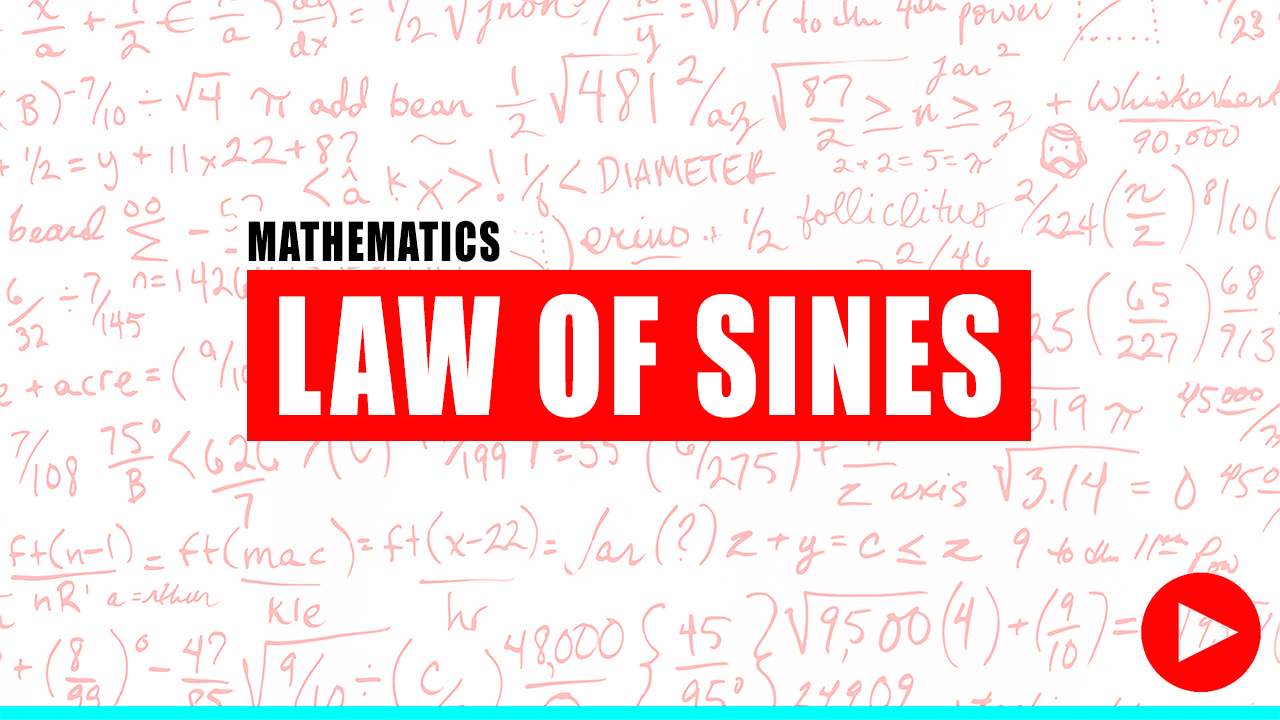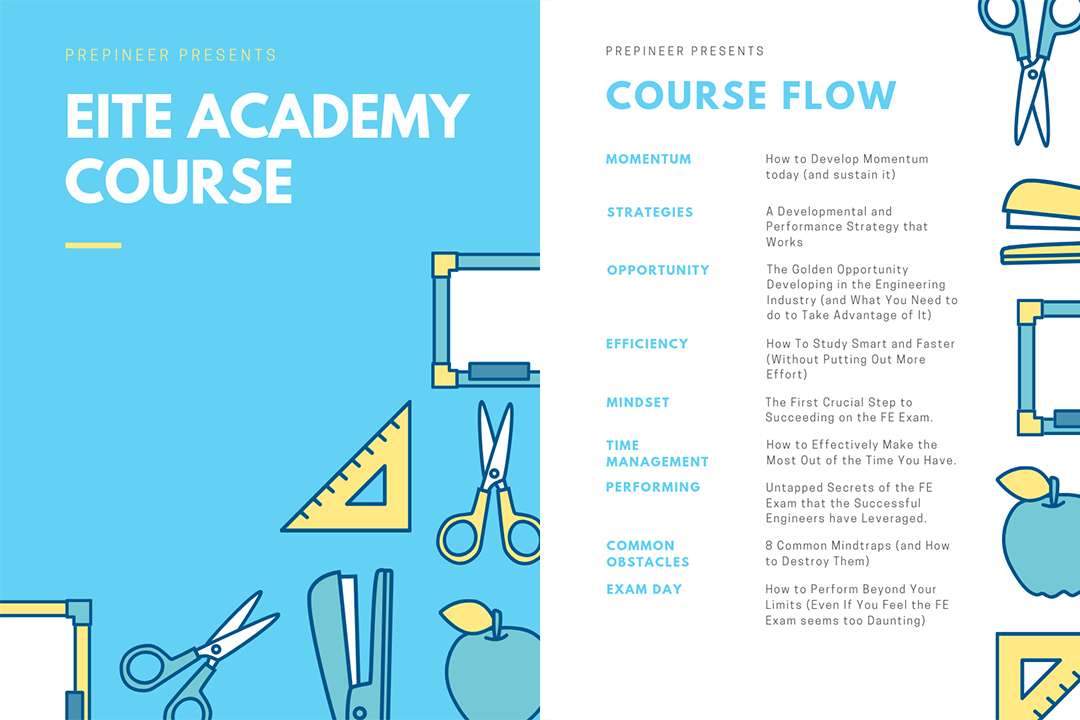In this episode of Engineer In Training Exam TV, Justin walks you through a Fundamentals of Engineering Exam Review of Law of Sines.
He will start by defining the Law of Sines and the run through a couple of instances in which we can use the law of sines to solve for unknown characteristics of a triangle.
This Fundamentals of Engineering Exam Review of Law of Sines is part of the global subject Mathematics.
Having served over 1.5 million lessons in 150 different countries, it’s safe to say we have been in the trenches.
In the trenches working with those who are taking the exam for the first time, either fresh out of college or having taken a few years off from the books.
In the trenches working with those who have already attempted the exam, maybe multiple times, and can’t seem to crack the code.
In the trenches working with those who have been away from the books for ages, from standardized testing for the same amount of time, and can’t fathom taking on this beast of an exam.
And every iteration in between.
Every student’s situation is unique, but the building blocks of what success looks like are always the same.
Click below to register for the FREE myFE Exam Academy Course.
Once you are registered, you’ll get instant access to a proven roadmap, strategies and tactics…
Straight to your email box.
REGISTER NOW!
Hey what’s going on everyone, it’s Justin Dickmeyer from EngineerInTrainingExam.com.
In today’s video we are going to present a Fundamentals of Engineering Exam Review of Law of Sines.
We’ll start off this tutorial discussing the theory and then get in to working a problem.
So let’s start off our Fundamentals of Engineering Exam Review of Law of Sines by defining exactly what Law of Sines is.
The law of cosines and the law of sines
allows us to solve triangles that are
not right-angled in our called oblique
triangles it states the following the
sides of a triangle are to one another
in the same ratio as the signs of their
opposite angles so to illustrate that
let’s look at the triangle here let’s
say this is side a this is side B side C
this is angle a this is angle C and this
is angle B so the algebraic statement of
the law of sines states that sine of a
over a is equal to sine a B over B which
is equal to the sine of C over C so
let’s take into take and look at example
here let’s look at the triangle let’s
say that we know this angle right here
65 degrees we got this angle 75 degrees
and this angle is 40 degrees let’s say
this side is 10 and let’s say we do not
know this side which we’ll call X and we
want to find that side so all we need to
do is employ the law of sines so again
its sine of a over a is equal to sine of
B over B which is equal to sine of C
over C so in this case we can we can
just take the angle for T in the ankle
75 and the side of 10 and the side 10 to
determine X so let’s go ahead and take
that ratio let’s say the sine of 75 over
10 is going to be equal to the sine of
40
over X now just rearranging and solving
that we get 10 sine of 40 over the sine
of 75 is equal to X and using our
calculators we find that X is equal to
six point six five so what if we are
given a triangle that has an obtuse
angle how do how do we go about solving
that well no differently we do the same
thing we just take the ratios of the
sides and the angles and a soft form so
let’s look at an example there example
let’s say that we have in triangle that
looks something like this and let’s say
this angle is our obtuse angle and it’s
105 and we got this angle which is 25 in
this angle let’s say 50 and let’s say
that we have this side is 10 and this is
our unknown side X so all we need to do
once again is look at our definition of
the law of sines and know that all we
need to do is have plug in a couple few
couple knowns to get that unknown X so
let’s say we got sine of 25 which is the
opposite of our known sine of 10 divided
by 10 is equal to sine of 105 which is
opposite our unknown X and once again
just rearranging that we got X is equal
to 10 sine of 105 divided by sine of 25
solving that using our calculators we
find that X is equal to 22 point eight
so no different just solve it in the
same way just use the ratios so what if
we want to find an unknown angle and all
these all these previous examples we’ve
we kind of just used the law of sines to
determine unknown sides but we can
so you use the law of sines to find the
unknown angle so let’s look at another
example here example let’s say we have a
triangle and let’s say we know this side
is five point five we know this side is
four point seven and we know this side
or this angle is 63 degrees so what we
want to do is find angle B so how do we
do that let’s say this is angle B since
we know side B and we know we know a
side and and that 63 is the angle
opposite to our our second known side
all we need to do again is take our sine
of 63 divided by the known side of
five-and-a-half and our unknowns angle B
divided by our known side of four point
seven so again all we need to do is
rearrange sine of B is equal to four
point seven sine of 63 divided by five
point five and we can take the inverse
sine of this all and let’s calculate
this out this is all getting equal point
seven six one taking that inverse sine
we find that B is equal to forty nine
point six degrees so we’re also able to
find an unknown angle using the law of
sines so that’s it for now guys I hope
you appreciated that quick review that
simple review I know it was probably
pretty basic to you guys but definitely
something that you need to brush off up
on because as easy as it may seem you
will run across some of these questions
on the exam and being able to crank
these out as quick as possible is
definitely going to be of benefit to you
so anyways if you guys have any more
questions about the engineer in training
exam go ahead and visit my site and
engineering training exam comm and also
take a minute and
or quick second and subscribe to this
channel I’d be honored to have you as a
subscriber
I’m definitely have plans to expand this
channel and get more content up for you
guys to check out so if you have also
any topics that you would like me to
cover in future tutorials
definitely don’t hesitate to contact me
I’m definitely open to all emails and
contacts and I’m just out there to help
you guys out so I’ll do the best that I
can for you so for now take care and I
look forward to talking to you guys soon
all right bye
—
Follow Prepineer Online Here:
Instagram: https://instagram.com/prepineer
Prepineer Facebook: https://facebook.com/prepineer
EngineerInTrainingExam Facebook: https://www.facebook.com/EngineerInTrainingExam
Snapchat: https://www.snapchat.com/add/prepineer
Website: https://www.Prepineer.com
Website: https://www.EngineerInTrainingExam.com
Twitter: https://twitter.com/prepineer
Passing the FE Exam – Engineering Advice (private Facebook group): https://www.facebook.com/groups/372061059925853/







Leave a Reply